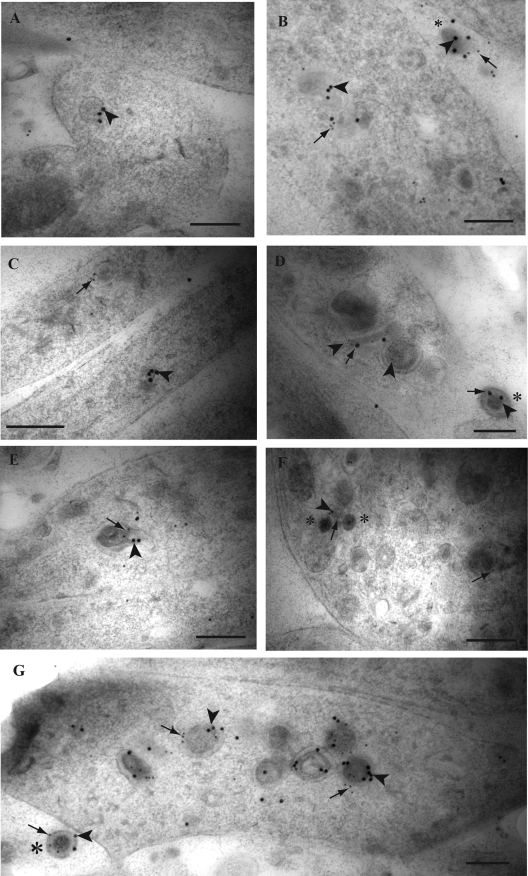FIG. 1.
Double immunogold labeling for HSV-1 tegument proteins VP16 and VP22 in axons of HSV-1-infected human DRG. Coverslips with DRG cultures were processed to Lowicryl HM20, and dual immunogold labeling of ultrathin sections of mid and distal axons containing varicosities and growth cones was performed as described in Materials and Methods. (A) Label for VP22 (arrowhead) on a dense-cored vesicle in a growth cone. (B) Double label for VP16 (10-nm gold particles; arrows) and VP22 (15-nm gold particles; arrowheads) on dense-cored vesicles in a varicosity and decorating an extracellular virion (indicated by the asterisk). (C) Label for VP16 (arrow) and VP22 (arrowhead) on separate dense-cored vesicles in adjacent axons. (D) Label for VP22 (5-nm gold particles; arrowheads) and VP16 (20-nm gold particles; arrows) is present on a tubulovesicular membrane structure and multivesicle aggregate in between two enveloped capsids in a varicosity. Label for VP22 is decorating both viral particles inside the varicosity, while label for both VP16 and VP22 decorates the extracellular virion (indicated by the asterisk). (E) Dual label for VP16 (10-nm gold particles; arrow) and VP22 (15-nm gold particles; arrowhead) on a partially enveloped viral capsid in a growth cone. (F) Label for both VP16 (10-nm gold particles; arrows) and VP22 (15-nm gold; arrowhead) in proximity to unenveloped capsids (indicated by the asterisk) and on a large dense-cored vesicle in a growth cone. (G) Accumulation of enveloped capsids in a growth cone, densely labeled for both VP16 (arrows) and VP22 (arrowheads). Label for both tegument proteins also decorates an extracellular viral particle (indicated by the asterisk) adjacent to the growth cone. Bars, 200 nm.

